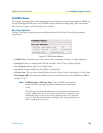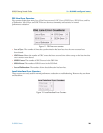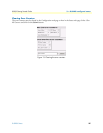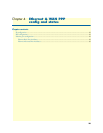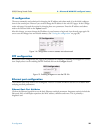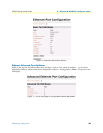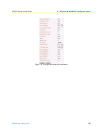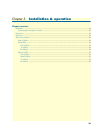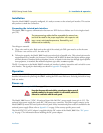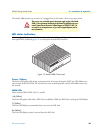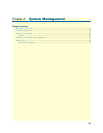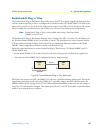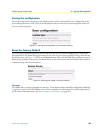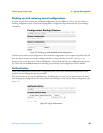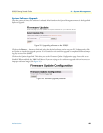
Installation 33
3088/I Getting Started Guide 5 • Installation & operation
Installation
Once the Model 3088/I is properly configured, it is ready to connect to the twisted pair interface. This section
tells you how to make the connection.
Connecting the twisted-pair interface
The Model 3088/I supports communication between two DTE devices as follows over 2-wire single twisted-
pair (TP).
Two things are essential:
1. These units work in pairs. Both units at the end of the twisted pair DSL span must be set for the same
DTE rate—one unit set as CO, the other as CP.
2. To function properly, the Model 3088/I needs one twisted pair of metallic wire. This twisted pair must be
unconditioned, dry, metallic wire, between 19 (0.9mm) and 26 AWG (0.4mm) (the higher number gauges
will limit distance). Standard dial-up telephone circuits, or leased circuits that run through signal equaliza-
tion equipment, or standard, flat modular telephone type cable, are not acceptable.
The RJ-11 connector on the Model 3088/I’s twisted pair interface is polarity insensitive and is wired for a two-
wire interface. The signal/pin relationships are shown in Appendix D on page 56.
Operation
Once the Model 3088/I is properly configured and installed, it should operate transparently. This section
describes information for powering the 3088/I, reading the LED status indicators, and using the built-in loop-
back test modes.
Power-up
(Also refer to “Power up the NTU” on page 17.)
The Model 3088/I uses a 5 VDC, 2A universal input 100–240 VAC, power supply (center pin is +5V). The
universal input power supply has a male IEC-320 power entry connector. This power supply connects to the
Model 3088/I by means of a barrel jack on the rear panel. Many international power cords are available for the
universal power supply (Please refer to Appendix C on page 54 for country-specific power cords.
The 36-60 VDC DC to DC adapter is supplied with the DC version of the Model 3088/I. See “DC power-
up” on page 17 for information about installing the DC power adapter.
The interconnecting cables shall be acceptable for external use
and shall be rated for the proper application with respect to volt-
age, current, anticipated temperature, flammability, and
mechanical serviceability.
Ensure that the power cable used with the external power adapter meets all
applicable standards for the country in which it is to be installed, and that it is
connected to a wall outlet which has earth ground.
CAUTION
WARNING



